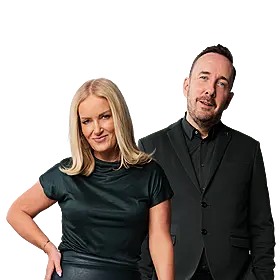The term 'fake news' has been bandied about quite a bit over the last number of months. While it is said to have had an impact on the US Presidential election, nobody has come up with a solution to stop it from happening. In an attempt to help users identify questionable stories, Facebook has rolled out a new educational initiative.
As of today, users in 14 countries will see a link to "Tips for spotting false news" at the top of their News Feed. This brings users to a list of 10 tips to help them identify fake news.
"Improving news literacy is a global priority, and we need to do our part to help people understand how to make decisions about which sources to trust," said Adam Mosseri, Facebook's VP of News Feed, in a blog post . "False news runs counter to our mission to connect people with the stories they find meaningful. We will continue working on this, and we know we have more work to do."
Tips:
While Irish users will not see the tips alert at the top of their feed, we have managed to access the ten tips from Mark Zuckerberg's company.
- Be skeptical of headlines: False news stories often have catchy headlines in all caps with exclamation points. If shocking claims in the headline sound unbelievable, they probably are.
- Look closely at the URL: A phony or look-alike URL may be a warning sign of false news. Many false news sites mimic authentic news sources by making small changes to the URL. You can go to the site and compare the URL to established sources.
- Investigate the source: Ensure that the story is written by a source that you trust with a reputation for accuracy. If the story comes from an unfamiliar organization, check their “About” section to learn more.
- Watch for unusual formatting: Many false news sites have misspellings or awkward layouts. Read carefully if you see these signs.
- Consider the photos: False news stories often contain manipulated images or videos. Sometimes the photo may be authentic but taken out of context. You can search for the photo or image to verify where it came from.
- Inspect the dates: False news stories may contain timelines that make no sense or event dates that have been altered.
- Check the evidence: Check the author’s sources to confirm that they are accurate. Lack of evidence or reliance on unnamed experts may indicate a false news story.
- Look at other reports: If no other news source is reporting the same story, it may indicate that the story is false. If the story is reported by multiple sources you trust, it’s more likely to be true.
- Is the story a joke? Sometimes false news stories can be hard to distinguish from humor or satire. Check whether the source is known for parody and whether the story’s details and tone suggest it may be just for fun.
- Some stories are intentionally false: Think critically about the stories you read, and only share news that you know to be credible.
This is just one of the ways the company says it is attempting to stop the spread of misinformation. It is also working with third-party fact-checking orgranisations to flag false content and is funding the News Integrity Initiative.
Speaking about the issue of 'fake news', COO Sheryl Sandberg said, "We know that seeing accurate news on Facebook is really important to people on all sides. We know we have a responsibility, along with newsrooms and classrooms and academic and other companies, to make sure people see accurate news."









